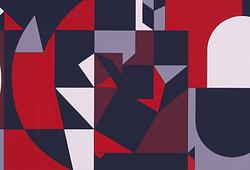A bronze ritual wine vessel, jue and a bowl, possibly Shang and Ming dynasty.
The body is cast with an intricate band comprising two stylised taotie masks, one divided to the centre with a vertical flange, the other with the curved handle surmounted by a buffalo head. A prominent spout, whorl capped posts, and long tripod legs. (the flared tail missing). Height 20 cm. The bowl with rounded sides, on a high foot. Traces of fabric inside. Diameter 16.5 cm.
Damages, parts missing. Tarnished. Encrustations.
Alkuperä - Provenienssi
From the collection of Johan Adolf Drougge, 1867-1956). A Swedish M.D. at Karolinska Institutet, who served as a doctor at the Kronoberg regiment 1903-1910, and at the Göta lifeguards from 1910. He was also a portrait painter, and has been exhibited at Liljevalchs in Stockholm. He was a passionate art and antiques collector and started a fund for research called the Adolf Drougge stiftelse.
Näyttelyt
For other lots from this collection, see Bukowskis sale 645, lot 247. A west Anatolian "Lotto" rug, 17th century,
Kirjallisuus
Litterature; see his home depicted in Svenska Hem i ord och bild 1926, page 233-243..
Muut tiedot
As one of the oldest vessel forms, jue were used and continually adapted over several centuries, enjoying a relatively long period of popularity. In the earliest forms of Chinese writing, the character for jue in oracle bone inscriptions depict the long legs, spout and upright posts of the two present jue, suggesting a distinct vessel form and function from very early on (as discussed by E. Childs-Johnson in The Jue and its Ceremonial Use in the Ancestor Cult of China, Artibus Asiae, vol. 48, No. 3/4, 1987).











































































